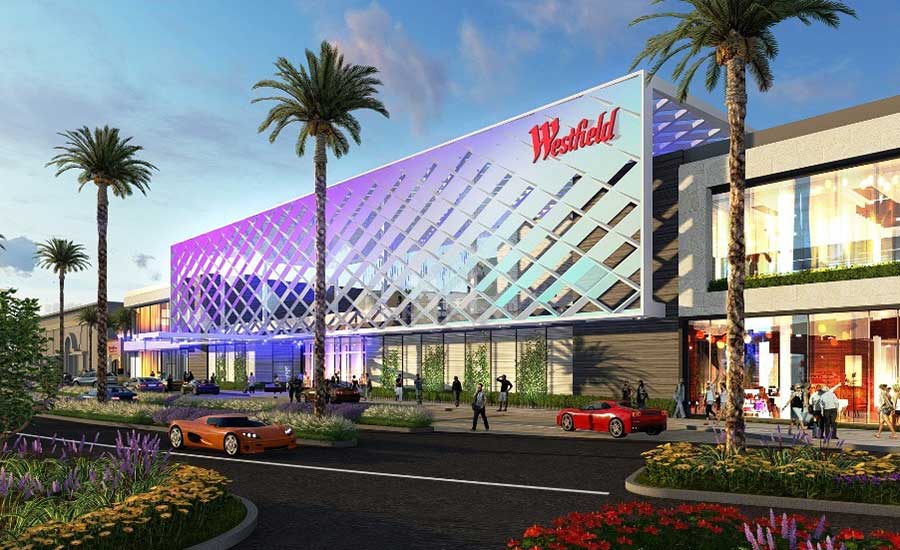By Greg Aragon | Mar 30, 2018 |
“The future is already here; it’s just not evenly distributed.” This quote by writer William Ford Gibson was a theme at a recent forum on the future design state and fate of the shopping mall. The discussion was part of “The Changing Tide: Navigating California Construction” conference held in Downtown Los Angeles earlier this month.
Entitled “Riding Giants – Designing the Future of Retail,” the forum was moderated by Marc Fergus, managing director with Cumming, an international construction project management and cost consulting firm. Speakers included Trevor Pollard, AIA, vice president of design with Westfield Corporation; and Trevor Shulters, CPE., associate director, Cumming.
Pollard, who has been designing malls with Westfield for about 15 years, discussed the findings of a multi-year Westfield research project that looked into trends shaping the future of shopping centers. The first phase of this project was to assemble a diverse team to examine “every single force in the environment” that could influence the customer, he said.
“We came up with over 100 things that were going to change how our customer behaves or responds to their environment,” said Pollard. He said factors included economics, social media, driverless cars, drones and more. “We put it all in a matrix and tried to create relationships between these zones.”
Pollard, whose company is currently working on a $1.5-billion renovation of the Valley Fair mall in San Jose, said once they had these 100 elements, they needed to decide what was relevant. Of these ideas, driverless cars were something they looked at closer with regards to shopping center parking garages.
He said they reached out to Google about driverless cars and the tech company was interested in the fact that malls have thousands of parking spaces that are empty at night and could be used for a fleet of autonomous vehicles to park and charge. The challenge was Google said it would need about 200 MW of electricity, or more power than an entire shopping center uses. And this is something Westfield is looking at for future parking structures, said Pollard.
Another modern trend Westfield is looking at is the overall size of shopping centers. “Everything is going to become smaller,” said Pollard. “It’s no surprise that retail is overbuilt in this country so there is going to be a massive consolidation and stores are going to become much smaller.” As an example to follow he points to the Apple store, which “does more volume out of a 10,000 sq-ft store than most department stores do out of 200,000 sq-ft stores. So we see that for shopping centers too. How do we make them smaller and more profitable per sq-ft?”
Wayne Selby, regional managing director for Cumming, was also at the conference. He told me that shopping centers are becoming an all-around “experience” for the customer.
“The way they are developing these mega-malls today is you have everything there, like education, advertising, events and entertainment,” says Selby, who specializes in quantity surveying and cost management, and who is also working on the Valley Fair project. “It’s changing the dynamic of how they build and sell real state and we as consultants have to be flexible to adapt to that as well.”
Pollard says designers need to create environments that are part of the community and completely mixed-use with hotels and housing. “We can’t be looking at it just as a single purpose shopping center experience,” he says. “It has to be about lifestyle, work and experience.”

